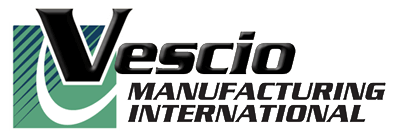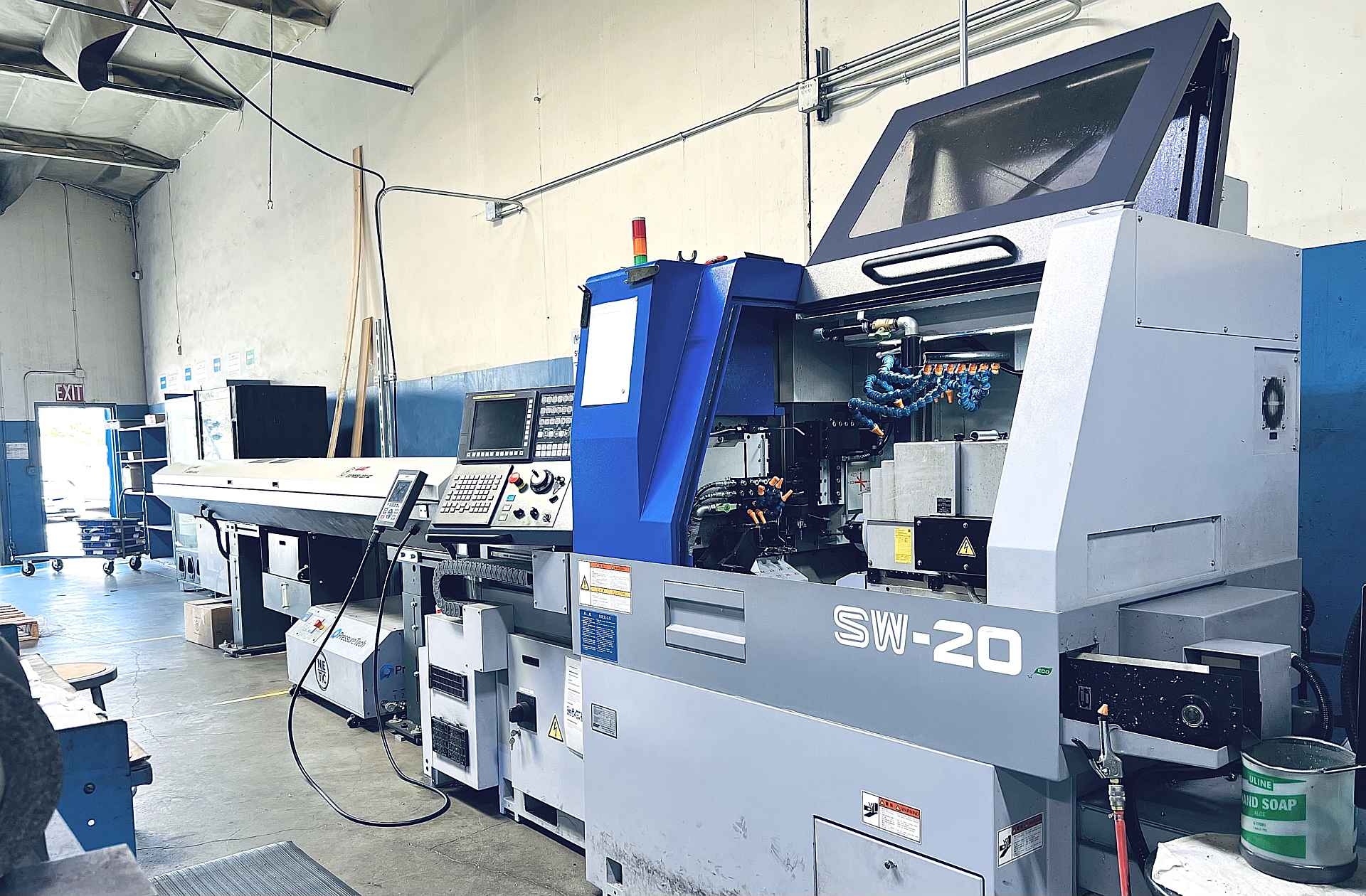Swiss turning machines operate differently than conventional CNC lathes in a number of ways. Both conventional and Swiss turning operations are subtractive machining processes: a centrally held workpiece spins, while precision grinding/cutting tools are moved into position to carefully chisel away material.
The Difference Between Swiss Turning and Standard CNC Lathes
The primary difference between conventional and Swiss turning is the method by which the workpiece is held. Conventional turning centers hold the workpiece at one or both ends, while Swiss turning centers feed the workpiece through a guide bushing, such that the machining is always performed near the support point. This provides a number of advantages to the manufacturing process.
The Advantages of CNC Swiss Machining Explained
Swiss lathes carry out subtractive machining processes in much the same way as conventional turning centers. However, Swiss machines utilize movable headstocks to clamp the workpiece, enabling it to be repositioned along the Z-axis as it is machined. The workpiece is also laterally supported by a guide bushing so that the machining operations are constantly performed in close proximity to the support point.
As a result, Swiss lathes minimize deflection and vibrations within the workpiece, allowing for the manufacturing of much longer cylindrical parts and components.
Conventional CNC Turning Lathes
Conventional CNC turning centers clamp the workpiece at one end or both ends – depending on the size of the machined part and the layout of the lathe. The lathe then “turns” the workpiece at very high speeds up to several thousand rpm.
While the workpiece spins, specialized cutting and grinding tools are precisely guided via CNC programming to carefully remove workpiece material according to your custom part designs. Through subtractive manufacturing all unnecessary workpiece material is removed, leaving behind a precision-machined component or assembly.
Cam-Operated Screw Machines vs. CNC Swiss Machining
CNC Swiss machining can also be compared to cam-operated screw machines – an advanced manual machining option suitable for many projects. One drawback is that cam-operated screw machines require highly specific procedures, therefore many shops will only master the operation of one specific machine, thus limiting their manufacturing flexibility.
Swiss CNC machines and cam-operated screw machines both feed the bar in and out of the spindle about the Z axis, as with conventional lathes. The major difference between a Swiss versus a cam-operated screw machine is the integration of CNC technology.
CNC Swiss lathes uses computer-generated toolpaths produced with a CAD file: they use the generated G-Code (CAM) files to precisely control all machining features such as contour, face grooving, OD and ID grooving, single-point threading, as well as secondary machining features such as in end mill contouring, perpendicular drilling and tapping, and multi-axis simultaneous machining. Essentially, CNC Swiss machines are a combination of lathe and multi-axis mills controlled by G-Code: the process is saved after the G-Code is proven.
In contrast, cam-operated screw machines use mechanical cams in conjunction with custom forming tools. All multi-cutting is precisely synced through the timing cam system. Machine operators and setup personnel, therefore, are usually highly skilled with the specific setup procedures of each unique screw machine. Screw machines often require manual notes and sometimes finesse or specialized knowledge to achieve accuracy and repeatability from one setup to another.
Your Single-Source Manufacturer for Precision Swiss Machining Services
Vescio’s full-service CNC turning department offers Swiss machining capabilities utilizing Star lathes with 12’ bar feeders and a max bar diameter of 32mm. Our versatile Swiss turning services are optimized for custom machining projects that require small, precision cylindrical components with close-tolerance, geometrically complex designs.
Delivering the utmost in production quality, consistency and efficiency, Vescio’s Swiss machining department is the ideal solution for your high-volume, difficult-to-manufacture CNC parts.

